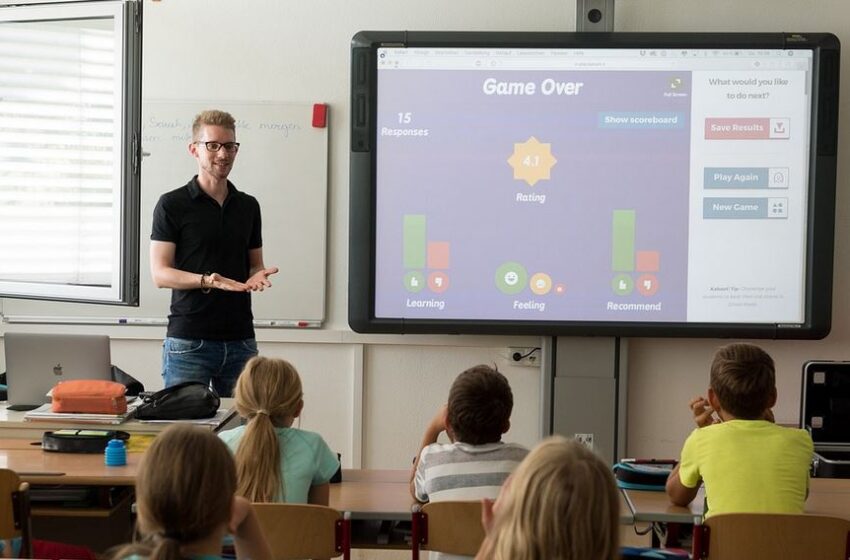Education: How Technology is Changing the Face

 In recent years, technology has transformed the face of education. From e-learning platforms to digital textbooks, educational institutions have adopted new technologies to enhance the learning experience. These technologies have made learning more accessible, interactive, and engaging. In this article, we will discuss how technology is changing the face of education.
In recent years, technology has transformed the face of education. From e-learning platforms to digital textbooks, educational institutions have adopted new technologies to enhance the learning experience. These technologies have made learning more accessible, interactive, and engaging. In this article, we will discuss how technology is changing the face of education.
1. E-learning Platforms
E-learning platforms have made education more accessible than ever before. These platforms offer a variety of courses, ranging from basic to advanced levels, and they allow students to learn at their own pace. E-learning platforms also provide access to a wide range of educational resources, including videos, articles, and interactive simulations. This makes learning more engaging and interactive.
2. Digital Textbooks
Digital textbooks are another way technology is changing the face of education. They offer a range of benefits over traditional textbooks, such as portability, cost-effectiveness, and interactivity. Digital textbooks can be accessed from anywhere, at any time, and on any device. This makes it easier for students to study on-the-go, and it also saves them money on physical textbooks.
3. Virtual and Augmented Reality
Virtual and augmented reality are two technologies that are revolutionizing the education industry. They offer a new level of interactivity and engagement in the learning process. Virtual reality allows students to explore immersive environments, such as historical landmarks, without leaving the classroom. Augmented reality, on the other hand, enhances the learning experience by adding digital content to the physical world. For example, students can use augmented reality to view 3D models of the human body or historical artifacts.
4. Artificial Intelligence
Artificial intelligence is another technology that is changing the face of education. AI-powered tools can help students personalize their learning experience by providing customized study plans and feedback. AI can also assist teachers in grading assignments, identifying areas of weakness, and providing real-time feedback to students.
5. Gamification
Gamification is the use of game mechanics and design in non-gaming contexts, such as education. Gamification can make learning more fun and engaging, which can lead to increased motivation and better learning outcomes. For example, teachers can use gamification to create interactive quizzes, learning games, and simulations.
Encouraging critical thinking and problem-solving skills in the classroom is essential to prepare students for the challenges they may face in their future careers and in life. Here are some strategies that teachers can use to promote critical thinking and problem-solving in the classroom:
1. Ask open-ended questions:
Instead of asking students yes/no questions or questions with one correct answer, ask them open-ended questions that encourage them to think critically and creatively.
2. Allow for discussion:
Encourage students to discuss and debate their ideas with one another. This allows them to hear different perspectives and consider new ideas.
3. Encourage reflection:
After a lesson or activity, have students reflect on what they learned and how they can apply it in real-life situations.
4. Provide opportunities for hands-on learning:
Give students opportunities to work on real-world problems or projects that require critical thinking and problem-solving skills.
5. Encourage collaboration:
Group projects or activities can encourage students to work together and learn from each other’s strengths and weaknesses.
6. Teach metacognition:
Help students understand their own thinking processes and how to monitor and evaluate their own learning.
7. Use technology:
There are many digital tools that can be used to promote critical thinking and problem-solving, such as simulations, games, and interactive whiteboards.
8. Model critical thinking:
As a teacher, model critical thinking and problem-solving skills by discussing your own thought processes and reasoning with students.
9. Provide opportunities for exploration and experimentation:
Allow students to explore and experiment with new concepts, materials, and ideas. This can help them develop a deeper understanding of the subject matter and foster their creativity.
10. Use real-life examples:
Incorporate real-life examples and case studies into lessons to help students apply their critical thinking and problem-solving skills to practical situations.
11. Encourage creativity:
Creativity is an important component of critical thinking and problem-solving. Encourage students to think outside the box and come up with unique solutions to problems.
12. Provide feedback:
Provide feedback on students’ work that encourages them to think critically about their thought processes and problem-solving strategies.
13. Emphasize the process, not just the outcome:
Encourage students to focus on the process of problem-solving, including identifying the problem, brainstorming solutions, evaluating options, and implementing a solution.
14. Foster a growth mindset:
Emphasize the importance of effort and perseverance in problem-solving, rather than just innate talent. Encourage students to see mistakes and failures as opportunities for growth and learning.
15. Differentiate instruction:
Provide differentiated instruction to meet the individual needs and abilities of students. This can help ensure that all students are challenged and engaged in the learning process.
By incorporating these strategies into their teaching, teachers can create a classroom environment that fosters critical thinking and problem-solving skills in their students. These skills are essential for success in today’s fast-paced, rapidly changing world.
In conclusion, technology has transformed the face of education. E-learning platforms, digital textbooks, virtual and augmented reality, artificial intelligence, and gamification are just a few of the technologies that have made learning more accessible, interactive, and engaging. As technology continues to advance, we can expect to see even more innovations in the education industry, which will make learning more personalized, efficient, and effective.


